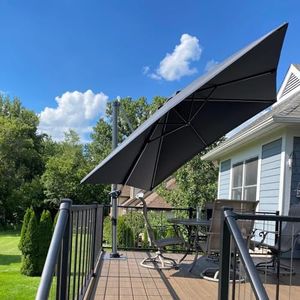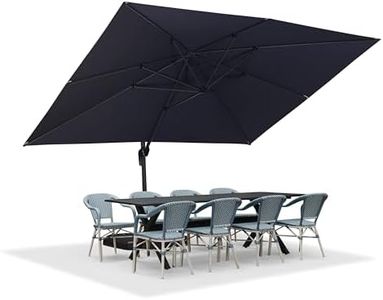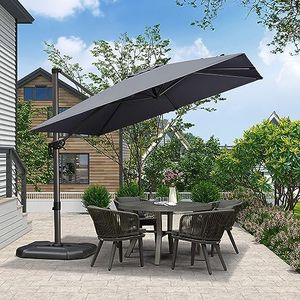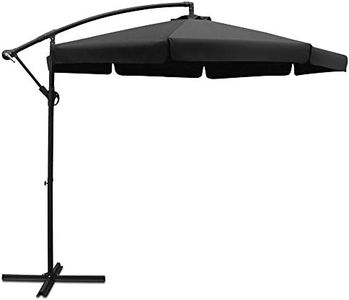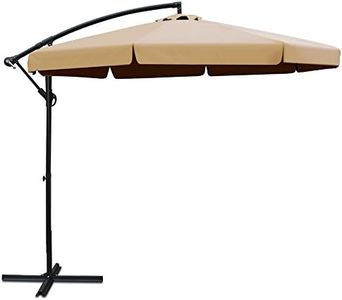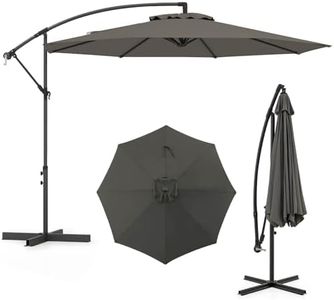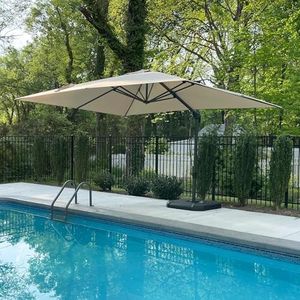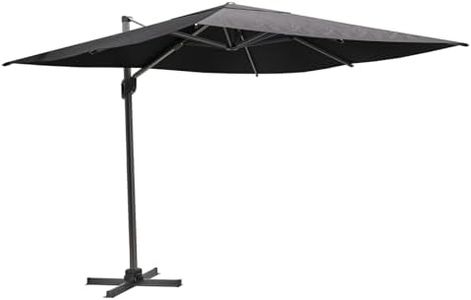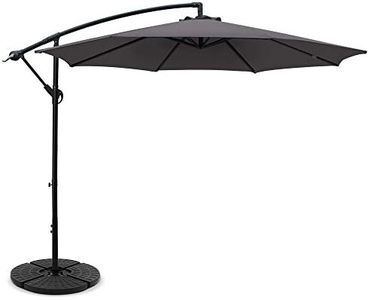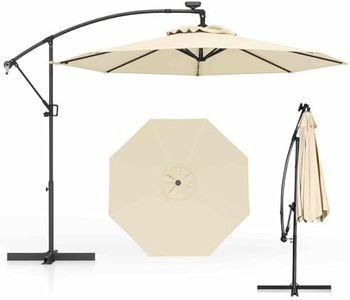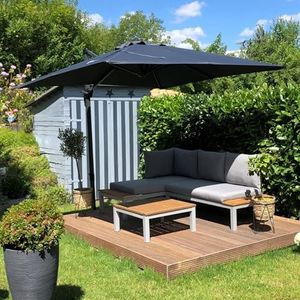We Use CookiesWe use cookies to enhance the security, performance,
functionality and for analytical and promotional activities. By continuing to browse this site you
are agreeing to our privacy policy
10 Best Cantilever Umbrellas
From leading brands and best sellers available on the web.Buying Guide for the Best Cantilever Umbrellas
Choosing a cantilever umbrella for your outdoor space is all about ensuring comfort and protection from the sun, while also fitting your style and needs. Unlike traditional patio umbrellas, cantilever umbrellas have an offset base and an adjustable arm that allow you to position the shade exactly where you want it without a pole getting in the way. When picking the right umbrella, consider where you'll use it, how much shade you need, and how easy it should be to operate.Size (Canopy Diameter)The diameter refers to the span of the umbrella's canopy and indicates how much shade it will provide. Larger diameters cover more area, making them better for big outdoor tables or seating groups, while smaller ones are great for compact spaces or small patios. Typical sizes range from about 8 to 13 feet. To choose the size that fits best, consider the space you want to shade—measure your furniture arrangement and ensure the canopy will cast a shadow over your sitting or dining area at the times you'll use it most.
Canopy MaterialThe canopy is the fabric top of the umbrella, and its material affects durability, fade resistance, and weather protection. Common materials include polyester, olefin, and solution-dyed acrylic; polyester is budget-friendly and decent for mild use, olefin offers higher resistance to fading and mildew, and acrylic is the top choice for colorfastness and weather resistance. If your umbrella will live outdoors all season and get heavy sun, prioritize fade-resistant and UV-protective fabrics. For occasional use or if you'll store the umbrella, a simpler fabric may suffice.
Frame MaterialThe frame's material determines sturdiness, weight, and resistance to rust or corrosion. Aluminum is lightweight and rustproof, making it ideal near pools or humid climates. Steel is heavier and sturdy but may rust if not coated well, while wood offers a classic look but requires more maintenance. Pick a frame that matches your climate and decor style—for wet climates or poolside use, go with rust-resistant metals; for elegance and occasional use, wood could be a great fit.
Tilting and Rotation MechanismThis refers to how the umbrella moves to block the sun as it shifts. Some cantilever umbrellas tilt vertically, some also rotate 360 degrees, and others offer both. More movement means you can adjust shade without moving the base. If your outdoor area gets sun from multiple directions, a model with both tilt and rotation provides maximum flexibility. If you mostly need shade from overhead, a simple tilt may suffice.
Base and StabilityA cantilever umbrella relies on a sturdy base since its weight is off-centered. Bases can be filled with sand, water, or come as heavy metal plates; the heavier the base, the less likely the umbrella will tip in wind. Ensure your chosen umbrella either comes with an appropriate base or buy one recommended by the manufacturer, based on the size and weight of your umbrella. For windy areas, prioritize heavier or anchoring bases for safety.
Ease of OperationOpening, closing, tilting, and rotating mechanisms should be simple and smooth, often using cranks or push-buttons. If you want daily convenience or have limited strength, look for ergonomic handles, smooth-glide mechanisms, and clear user instructions. Testing these features if possible (or checking detailed product details) can save frustration and ensure you won’t struggle to adjust your shade.


